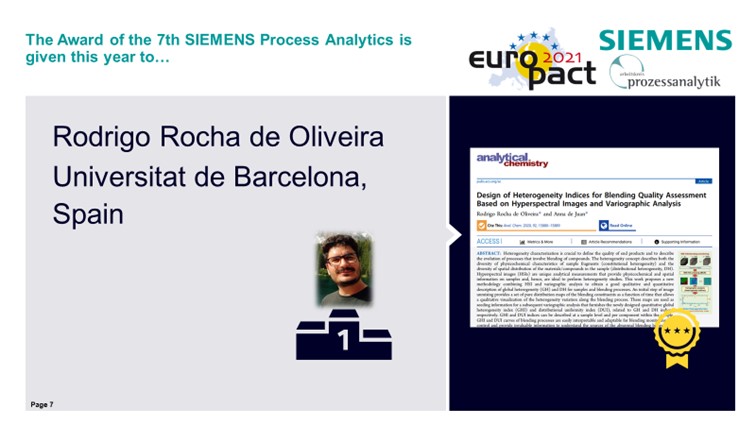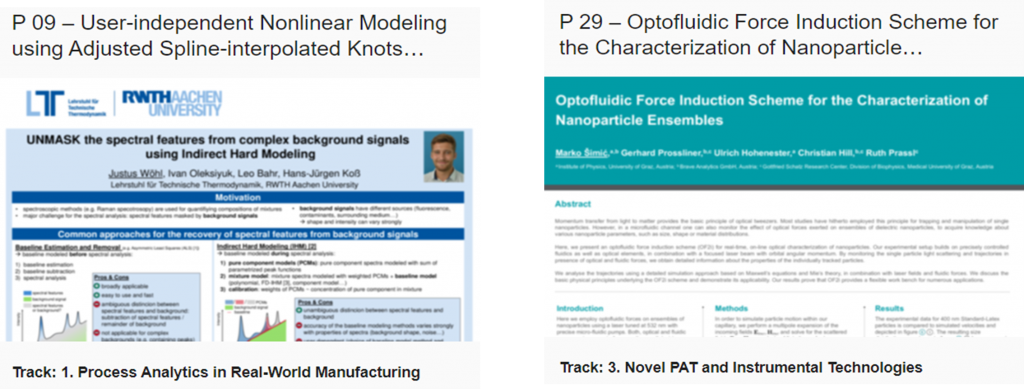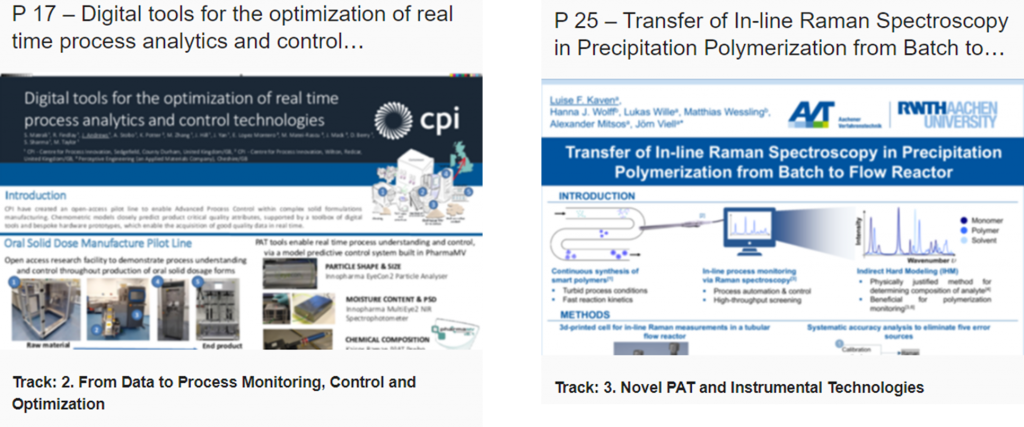Post by Justus Wöhl.
After having been postponed due to the worldwide pandemic once, the 5th European Conference on Process Analytics and Control Technology (EuroPACT) was finally held in an online format from the 15th to the 17th of November.
 Over the course of three days, 222 participants from all over Europe discussed the newest developments in process analytics and control technology, focusing on three different overarching topics: “Process Analysis in Real-World Manufacturing”, “From Data to Process Monitoring, Control and Optimization” and “Novel PAT and Instrumental Technologies”.
Over the course of three days, 222 participants from all over Europe discussed the newest developments in process analytics and control technology, focusing on three different overarching topics: “Process Analysis in Real-World Manufacturing”, “From Data to Process Monitoring, Control and Optimization” and “Novel PAT and Instrumental Technologies”.
Before the actual start of the conference, interested attendees could take part in an interactive nanoPAT workshop. This workshop introduced the NanoPAT project as well as teach the basics of the three real-time process analytical technologies. Potential application cases for these techniques were interactively discuss.
The conference started with a short introduction into the program and the platform used for the online conference. Even though almost every speaker expressed at some point that it would be nice to meet and talk in person, everyone seemed quite comfortable with the online format – probably thanks to a lot of experience gained since the start of the pandemic with all kinds of video conferences. Sitting in front of your computer does obviously not create the same feeling like being all together. However, the familiar and relaxed atmosphere that is omnipresent in the conferences organized by the AK Prozessanalytik could also be experienced during the EuroPACT, making one at time forget almost that this is all “just” online.


The conference kicked off with a plenary lecture held by A. Bilgic about the eight-fold path from data to knowledge and how to overcome the occurring challenges on that way. The first day was concluded by two parallel PAT training sessions about PAT in the food industry and intelligent PAT systems.
Over the course of the following two days eight keynote lectures were held, addressing diverse, current topics in PAT. The talks ranged from more broader topics, like how to make better use of measurement information (S. Engell), how to effectively use the data in process control (A. Mitsos), , to more specific topics regarding new developments for (smart) PAT equipment (B. Lendl, C. Caminada, L. Urbas) or the role and challenges of PAT in different industries (E. Skibsted, C. Kradjel).
On top of that, a total of 27 lectures distributed on eight different sessions gave interesting inside looks into ongoing research on a variety of different PAT-related topics. Between the talks refreshing breaks in form of established and new formats gave opportunities to network and discuss these new developments in PAT. Highlights were the popular poster and exhibitor/sponsor short presentations that were followed by fruitful and interesting discussions with the presenters.

Judging from the talks, posters and discussions, different forms of spectroscopy seem to solidify their status as a standard tool for the online analysis in complex systems. Furthermore, machine learning methods are developing from their state as a promising new tool to becoming more and more commonly used in many of the presented approaches.
New formats like the “EuroPACT Speed Dating” gave excellent opportunities to network and discuss with attendees from sometimes completely different fields and seemed to be well liked by the participants. Besides that, in a student meet & greet and discussion rounds the attendees could discuss and network in a relaxed atmosphere.

Also this time, the German Working Group „Prozessanalytik“ in cooperation with Siemens awarded the 7th Siemens Process Analytics Prize for an outstanding publication in the field of Process Analytics. Rodrigo Rocha de Oilveira (Universitat de Barcelona) won the price and presented his publication with the title “Design of Heterogeneity Indices for Blending Quality Assessment Based on Hyperspectral Images and Variographic Analysis” (published in ACS publications) in a short pitch.
Furthermore, prices for the best three posters were awarded. Luise Kaven (RWTH Aachen) with the poster “Transfer of In-Line Raman Spectroscopy in Precipitation Polymerization from Batch to Flow Reactor” and Jess Andrews (CPI – Centre for Process Innovation) with the poster “Digital tools for the optimization of real time process analytics and control technologies” both won the third place. Marko Simic (University of Graz) won the second place with the poster “Optofluidic Force Induction Scheme for the Characterization of Nanoparticle Ensembles”. Justus Wöhl (RWTH Aachen) won the first price with his poster “UNMASK the spectral features from complex background signals using Indirect Hard Modeling”.


We congratulate all winners once more.
We are looking forward to the next meeting of the community during the upcoming Euro-PACT in 2023 and this time (hopefully) in person in Copenhagen.
